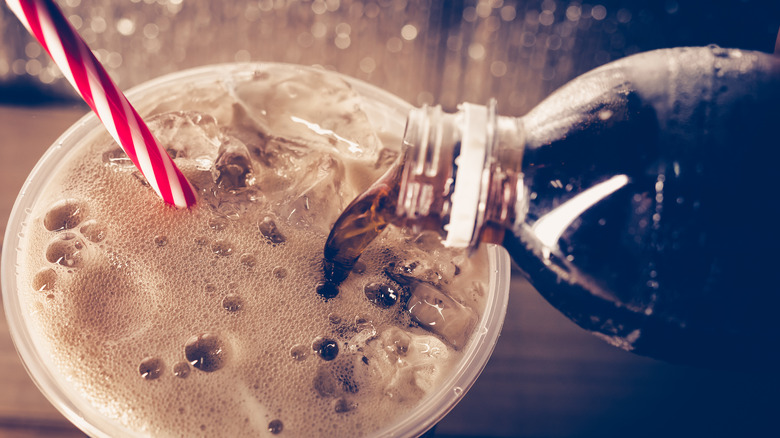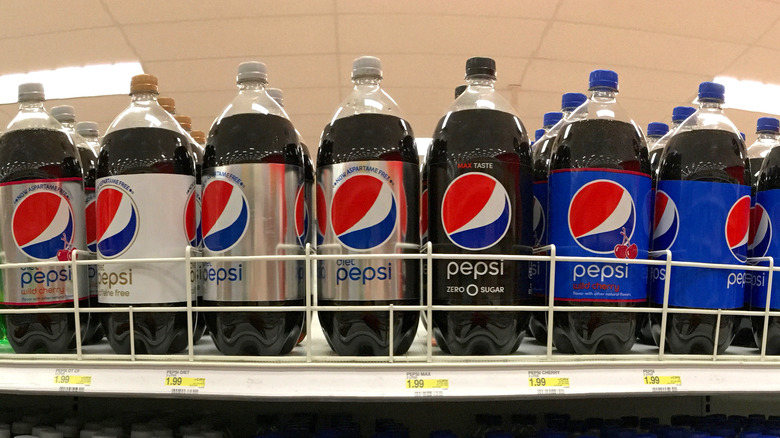Why Is Soda Sold By The Liter?
The best rivalries are always memorable. The Red Sox vs. the Yankees, the Cowboys vs. the Steelers, the Celtics vs. the Lakers. But only one rivalry affected the way an entire category of goods was purchased: Coke vs. Pepsi.
The rivalry began in the 1970s, when underdog Pepsi threw down the gauntlet with their Pepsi Challenge. This marketing campaign brought the blind taste test out to the public, with splashy commercials that showed people picking Pepsi over Coke. David Greising, author of "I'd Like the World To Buy a Coke," revealed to the History Channel that even Coca-Cola's internal studies showed this was true: Consumers preferred the taste of Pepsi (via Yahoo).
While Pepsi gained some market traction, it wasn't enough to beat Coke. So Pepsi began looking at their soda delivery vessels. John Sculley, who ran Pepsi during the peak of their rivalry, told Marketplace, "The Coke bottle was the perfect shape for a vending machine, to go down a bottling line and not get broken. It was a classic, very memorable design."
Pepsi couldn't design a better bottle — at least, not one that didn't resemble Coke's. But their market research on that project pointed to another pain point: Consumers ran out of soda quickly. Sculley recalls, "Why are we spending our time trying to design a little glass bottle when what we should really be doing is figuring out how do we get more liquid, more Pepsi, into that household?"
The arrival of Pepsi's two-liter bottle
Scully wanted Pepsi's bottles to be 10 times bigger than Coke's 6.5 ounces. In other words, about two liters.
At the time, the U.S. government was flirting with "metrication" — switching from the imperial to the metric system, the system of measurement used almost universally around the world. (Only the United States of America, Myanmar, and Liberia continue to use the imperial system.) Marketplace notes that the government hoped this conversion would help drive U.S. exports, which were declining at the time. While the country never actually made the switch, it didn't take long for the soft drink industry, with a non-perishable product that could be shipped worldwide, to get behind the new unit of measurement.
According to Mental Floss, the interest in metrication coincided with a growing environmental movement throughout the U.S. Smithsonian Magazine reports that the environmental movement of that decade saw an increasing interest in recycling single-use items like soda cans and bottles, with communities beginning to establish bottle return and curbside recycling programs.
With the launch of a new ad campaign touting their larger, lighter, cheaper, and recyclable plastic bottles, Pepsi changed the way consumers would buy soda. Two-liter bottles became the standard size for soft drinks, and Pepsi cemented a unique legacy even as the rivalry raged on.

